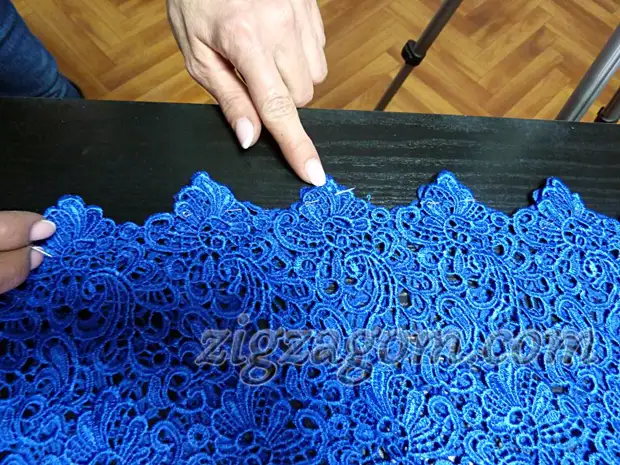
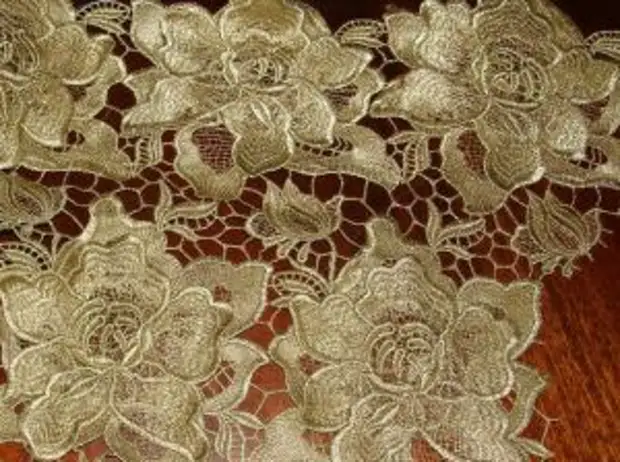
Today we will understand how to paint I. Sew lace cloths and lace.
How to sew lace cloths and lace
Sewing elegant dresses from lace cloths easy. Since lace, guipure or lace canvas - the material is quite beautiful in itself and the styles of lace dresses are not overloaded with all sorts of seams, undercuts and other decorative elements.
The technological properties of lace canvases and lace differ significantly from the properties of tissues and knitwear.
The lace canvases do not appear on cutting as fabric, they do not descend the loops as in knitted canvases.
They perfectly hold the form, do not stretch, do not "sit" after washing, if only they are not flaxed or x / b threads.
Seams in the products of lace canvases are not ironing.
And if there is a need to move the guipure cloth before opening, or the fired edge of the dress is restored, it is only a warm iron. Manually fired or finished edges of products from particularly delicate synthetic lace cute can be straightened with a nail or scroll.
If the dresses on the bottom or neck, the bottom of the sleeves are located on the bottom of the sleeves, the dress on these sections is not processed.
Festos on a lace canvase are curly protrusions of various shapes on the edge of the material.
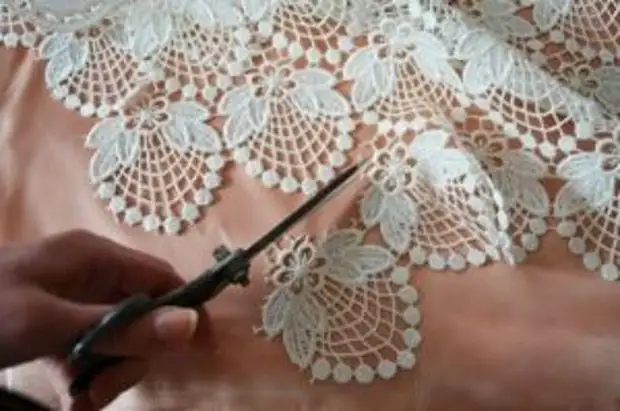
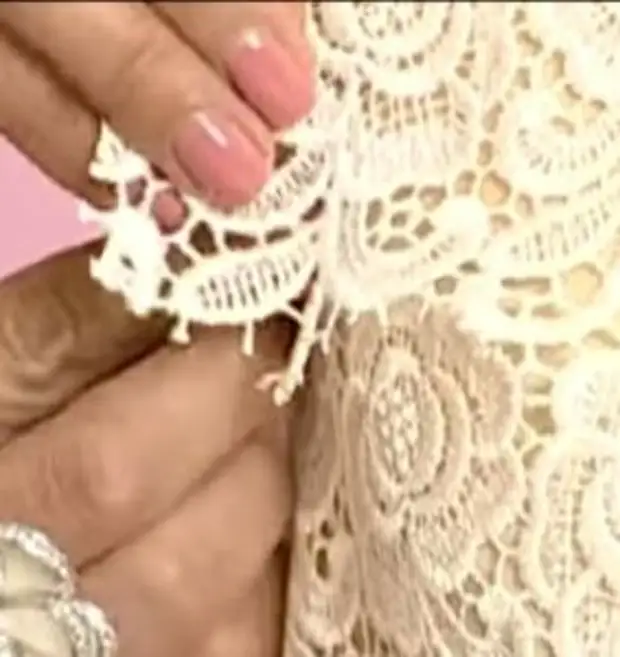
In the dresses from thin lace cloths, the connecting seams and seams of the ottachki are performed by a vulnerable seam on overlock or on a direct or zigzag lines with a single seam with one closed slice.
The shoulder seams in the elastic lace linen dresses are strengthened by cotton braid braid.
The sleeves are in charge of a narrow zigzag lines of lace dresses, or two straight machine lines, or one manual line.
Binding for connecting seams is narrow - 0.5 - 0.7 cm.
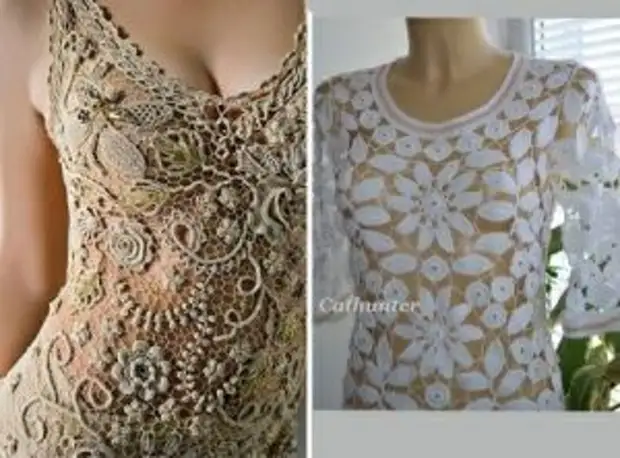
or lace taped with a setting seam,
or a soft elastic ribbon or elastic braid (not elastic!) with the processed edges of the overhead or edging seam with open cuts,
or edging oblique stance with two closed sections,
Or simply - the overwlled slice of the neck is dragging off on the wrong side.
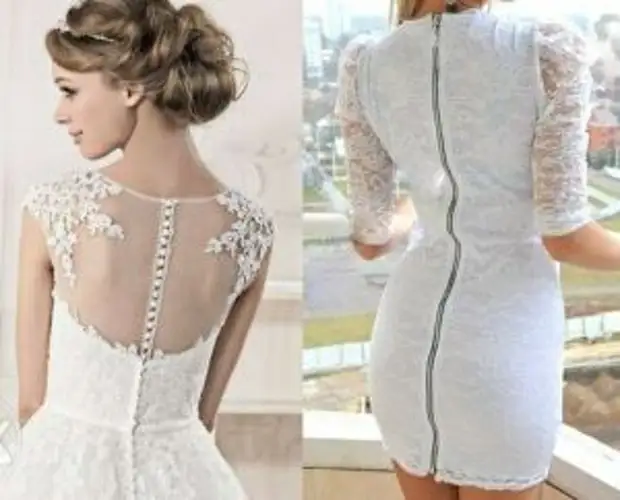
In dresses from a particularly thin lace canvase, the clash is processed by buttons and air loops.
In the dresses of lace, guipure and from lace clashes are processed by braid-zipper.
Zasya zipper is desirable to process the usual "lightning", not counted.
Not counted, because the lace when opening-closing the secret "lightning" falls into the clasm. To avoid this, it is necessary to fix the edges of the "Lightning" tape on the front side.
Therefore, it is better to immediately take the usual "zipper" and combine it with a manual or machine lines with a simple "grandfather" method:
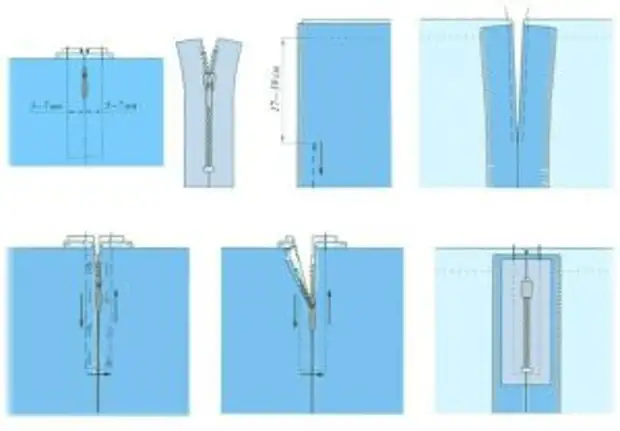
TOAK Coloring lace cloths and lace
Coloring lace canvases and lace is also not difficult, as sewing. But you need to be attentive and comply with some rules of cutting, after all, lace or lace canvas are not the cheapest material.
The layout of the patterns on a lace canvase or lace with a large asymmetric pattern makes awect, on a fine guipure with a small pattern - folded twice.
When the details of the dresses or blouses on the lace canvases or lace does not matter the direction of equity threads.
But when laying parts on lace canvases and lace places in front of the back, left and right sleeves in one direction of equity strands.
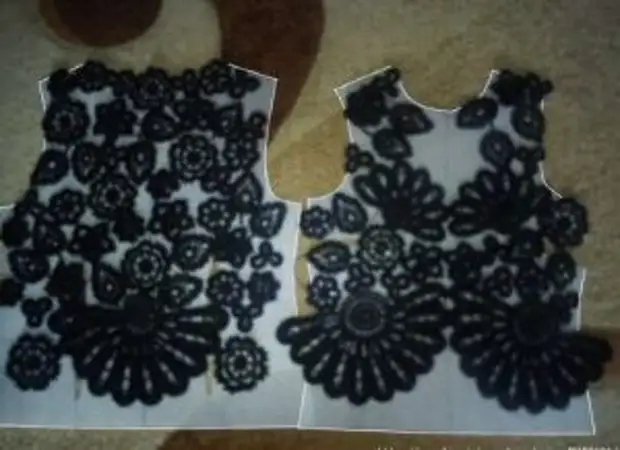
When laying, they pay attention to the fact that openwork fragments of laces were sampled symmetrically relative to the middle of the grade and middle of the back, openwork patterns on the sleeves in the finished dress or blouse - symmetrically the middle of the pass.
When laying parts on lace canvases and laces, ensure that in the places of connecting seams: medium sutures of the main parts, side seams of skirts, seams of pulp (if possible), etc., the drawing of the agenur lace is combined.
If the lace canvas with festons along the edge, then the back, in front of and the sleeves, cut the side of the canvas, posing the main details of the dress so that the festoons are located on the bottom.
And therefore the sleeves are obtained without allowances for niza bending,
The backrest and in front of the bottom edge - without drinks on the bending or the neckline - without allowances on the shaft,
Sleeves at the bottom edge - without drinks on the bending.
When cutting out the details of the dresses on the lace cloths are added conventional points on the seams. Then, after fitting and connecting parts, excess points on the seams are cut off.
No additional or auxiliary parts for sewing dresses from lace cloths or lace: hopping, bakery, oblique strips, etc. are not needed, and they do not cut out.
A source
